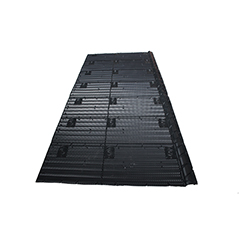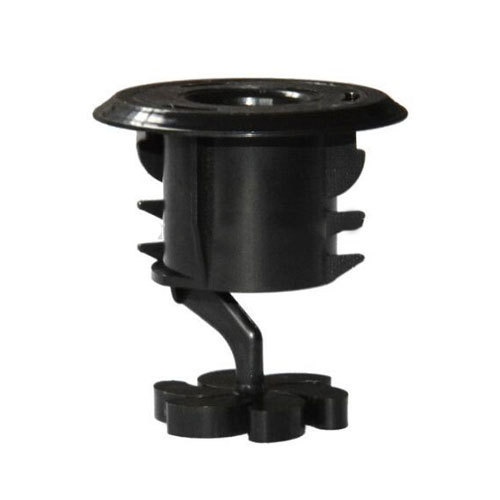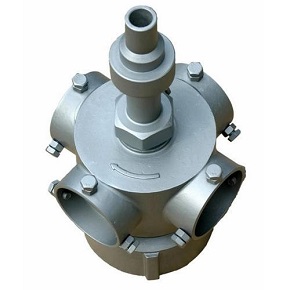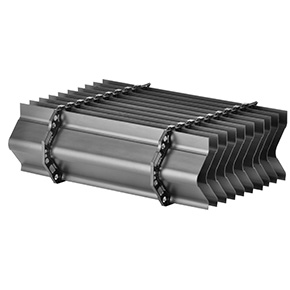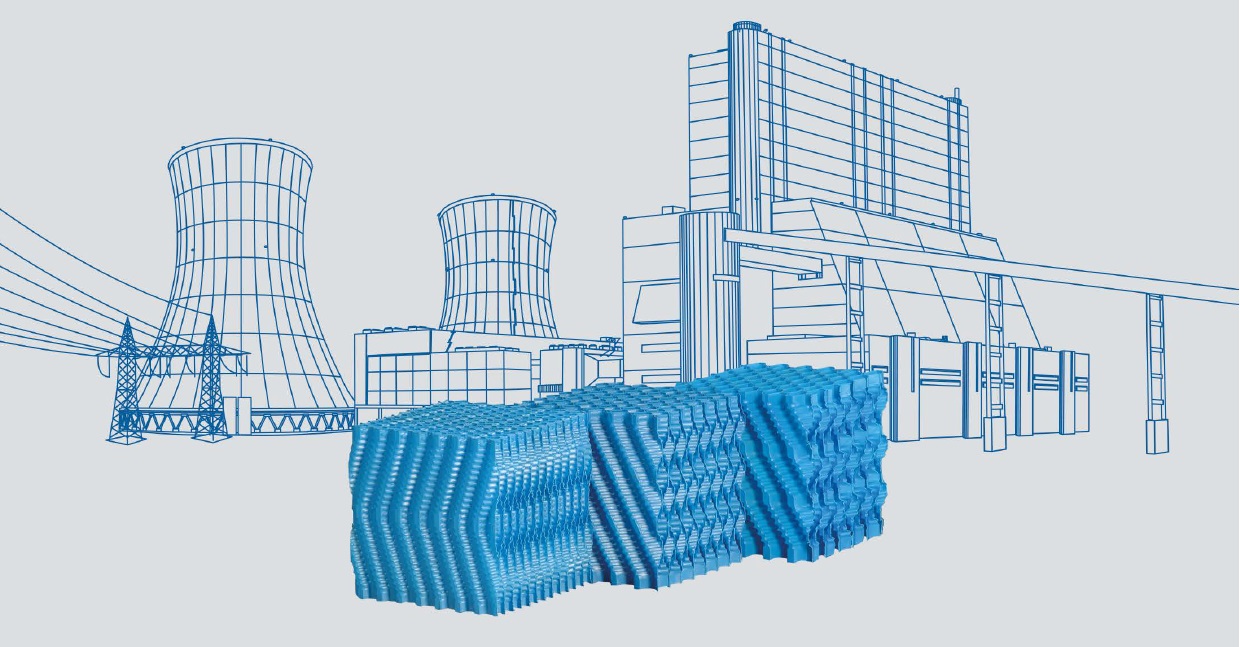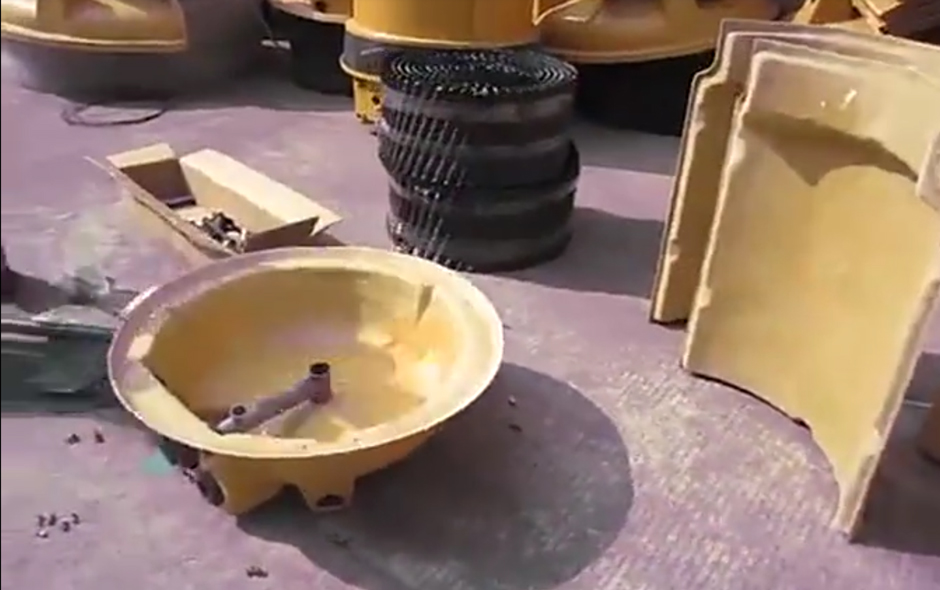How Cooling Towers Work (Diagram, Pictures & Principles)






Table Of Contents
How does a Cooling Tower Work?
How does Crossflow Cooling Towers Work?
How does Counterflow Cooling Tower Work?
How does Natural draft cooling tower work?
How does an Induced draft cooling tower work?
How does a Forced draft cooling tower work?
How does a Thermal power plant work?
Schedule Cooling Tower Services with us
Section1
How does a Cooling Tower Work?
As said earlier, cooling towers cool down the temperature of the water that is made too hot by manufacturing devices and methods. The hot water is habitually produced by air conditioning condensers or with some automated processes.
That water is tapped through the pipes straight into the cooling tower. Cooling tower spouts are managed to diffuse the water over the “fill media,” that reduces the flow of water and reveals the maximum volume of water covering area desirable for the safest air-water connection.
The water is flashed to air as it passes throughout the cooling tower. The air has been pulled using a motor-driven electrical "cooling tower fan".
When the air and water come into the contact, a little amount of water dissipates, producing a cooling operation. And again the cold water is pumped back to the machine that incorporates heat or the condenser. It replicates the ring, again and again, to make the equipment cooler.
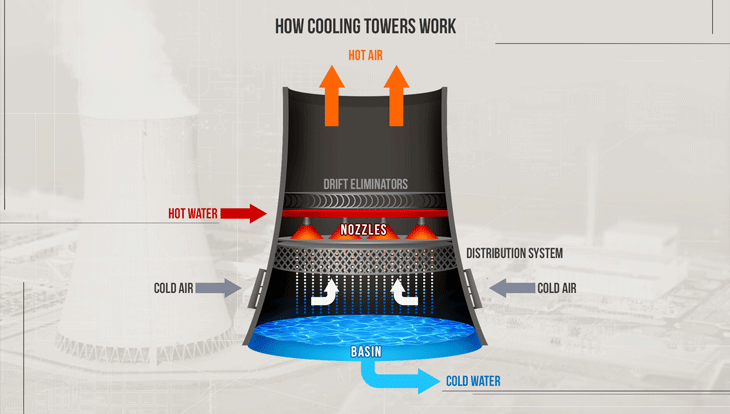
Section2
How does Crossflow Cooling Towers Work?
While we use crossflow cooling tower systems, the water in it moves vertically through the fill media, and the air in it runs horizontally across the dropping water. This is why it is known as "crossflow" as the water, and the air traverses its path.
Because of its unique process of crossing flow, the air does not need to move through the transmission system. This leads in the result of hot water streaming through gravity and disposal containers on the roof of the tower preceding the fill media. The disposal containers are a standard pattern of crossflow cooling towers and are connected to all the units.
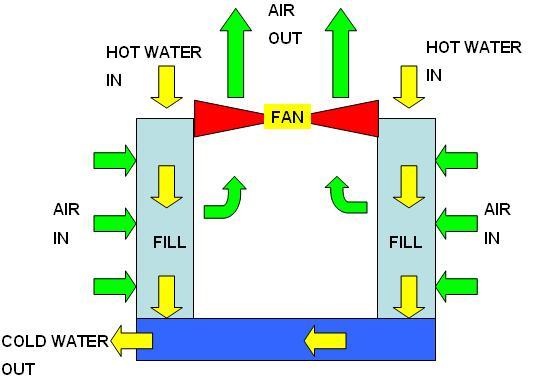
Section3
How does Counterflow Cooling Tower Work?
While we use counterflow cooling tower systems, the air flows vertically upward on account to the water stream in the fill media. As the air flow in the counterflow cooling tower system flows vertically, it is not reasonable to accept the container's gravity flow like in the crossflow cooling tower system.
So to replace the situation, the counterflow cooling tower system uses pressurized spray technique, usually pipe kind, to diffuse the water to the peak of the fill media. These pipes and cooling tower spouts are habitually distributed far apart so that they would not hinder any air flow.
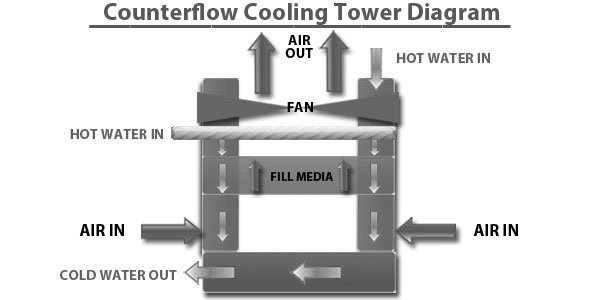
Section4
How does Natural draft cooling tower work?
Natural draft cooling tower used buoyancy through a towering chimney. Warm, humid air usually rises due to the varying density when compared to the dry, colder air outside. Warm, humid air is lower in thickness than the drier air at the very pressure. And this moist air resilience provides an upwards current of air within the tower.
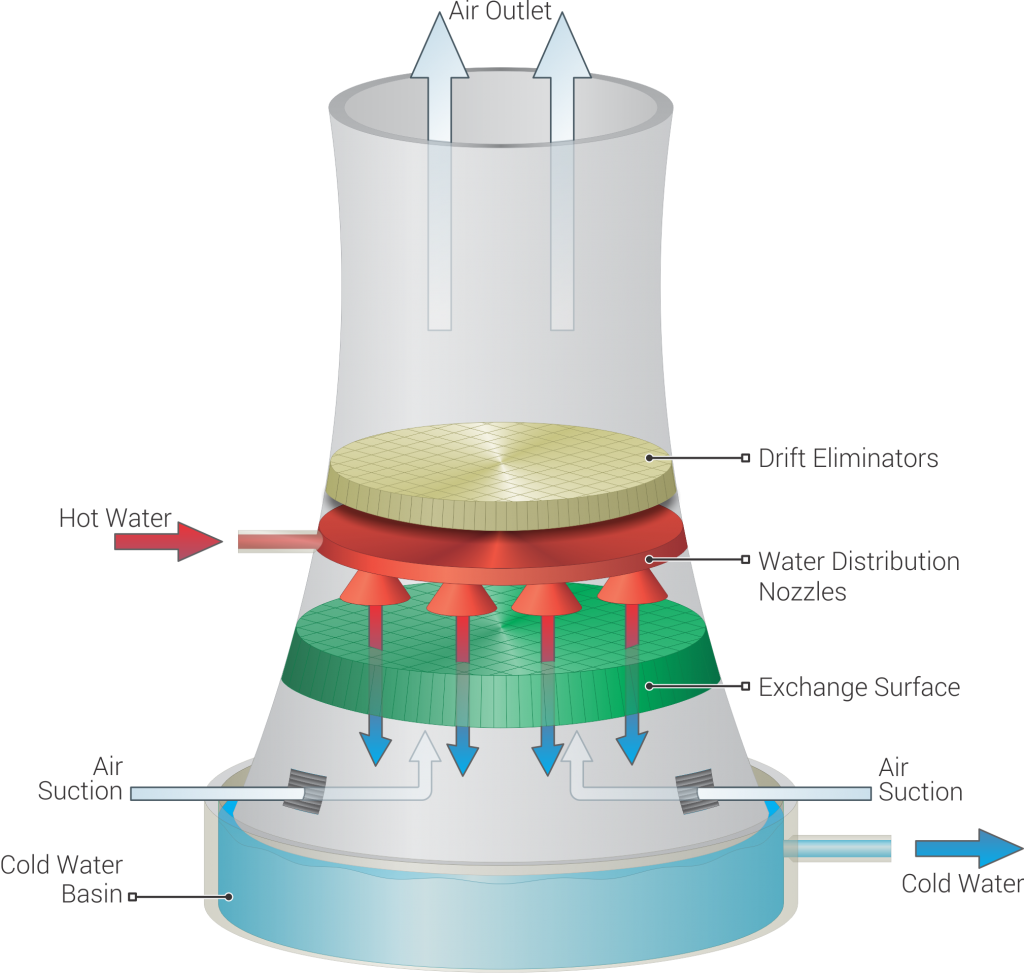
Section5
How does an Induced draft cooling tower work?
The automated draft tower along with a fan at the dismissal spot (at the top) that draws air up into the tower. The fan induces warm moist air out to demobilization.
This provides a low level of entering and high level of exiting air rapidities, decreasing the feasibility of recirculation in which liberated air runs back into the air admission. This induced fan system is also called as draw-through.
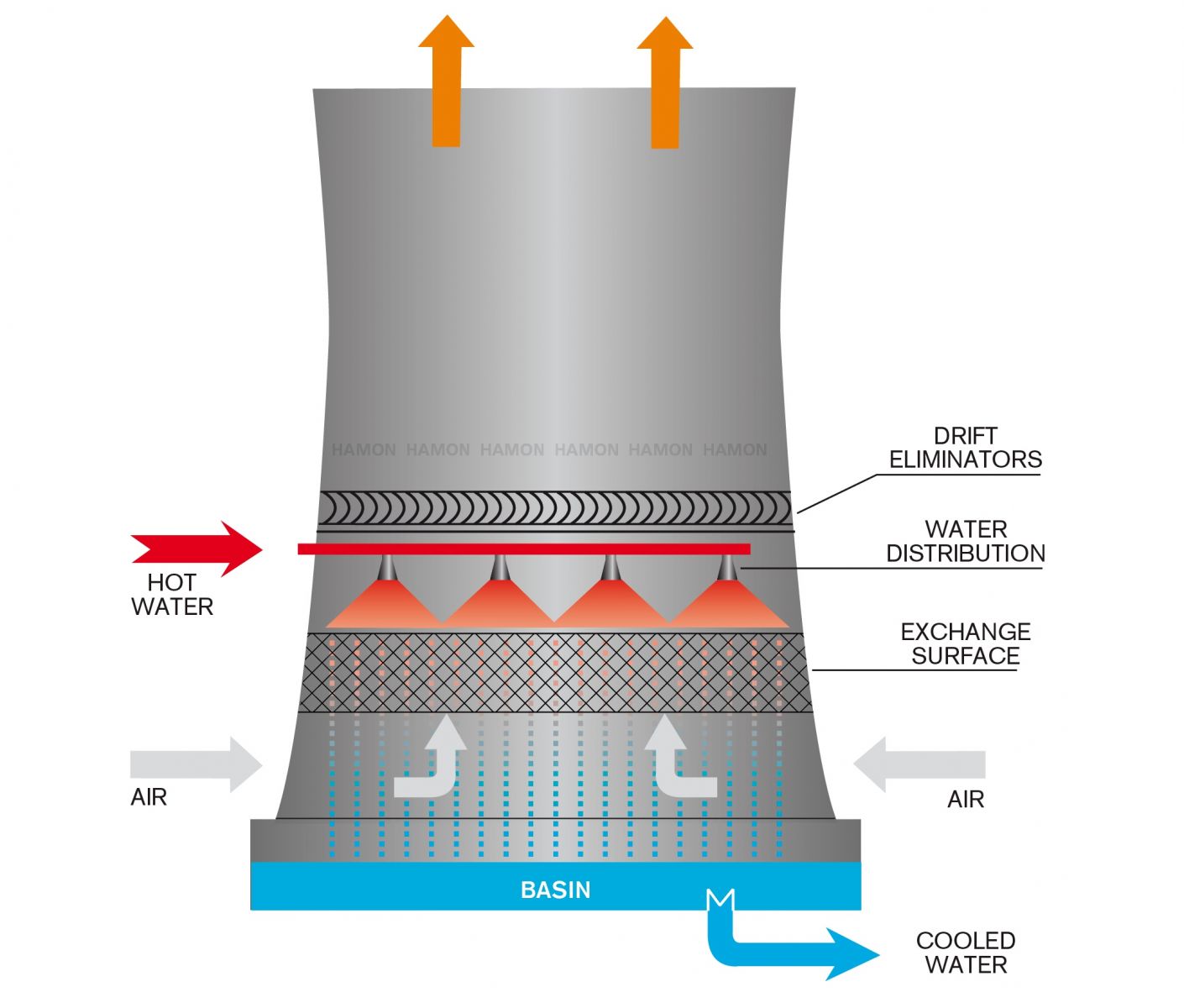
Section6
How does a Forced draft cooling tower work?
It is an automated draft tower along with a blower variety fan at the input. The fan forces the air into the tower, producing a high level of entering and low level of exiting air swiftness. The low level of exiting rapidity is extremely more receptive to recirculation.
With the fan which belongs to cooling tower parts above the air input, the fan is more sensible to complexities due to its frosting forms. But the downside is that a forced draft system usually demands extra motor power than an identical induced draft system.
The advantage of the forced draft system is its capacity to operate with huge latent pressure. Such compositions can be established in more restricted spaces and also in some indoor locations. This type of fan system is also called as blow-through.
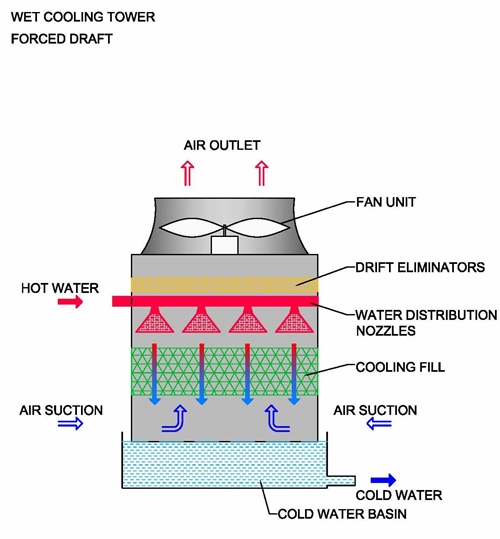
Section7
How does a Thermal power plant work?
A thermal power plant is a power station where the heat energy is transformed into electric power. Almost every part of the world, the turbine is utilized a steam-driven process. Water is heated, converts into steam and molds a steam turbine that operates an electrical generator.
After it crosses through the turbine, the steam is compressed in a condenser and recovered to where it was heated; this process is called as a Rankine cycle. The vastest difference in the system of thermal power plants is due to the varying heat sources; fossil fuel rules here, though nuclear heat energy and solar heat energy are also used.
Few choose to use the term energy center as such amenities turn the means of heat energy into electrical energy. Some thermal power stations are also intended to generate heat energy for mechanical purposes, or community heating, or desalination of water, an extension to producing electrical power.
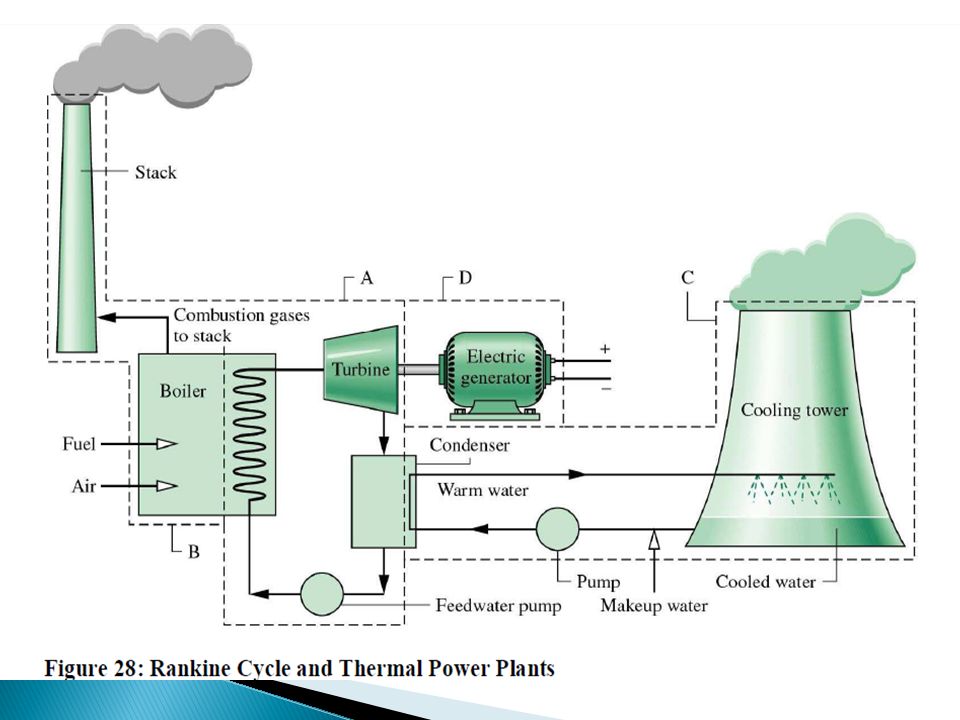
Section8
Conclusion
To discover further specific knowledge on how Cooling Tower Products help suffices your cooling tower requirements, contact our Customer Care Representative.
You might also like
Categories
Trending

